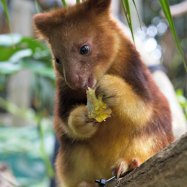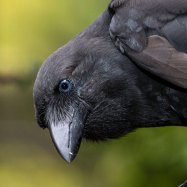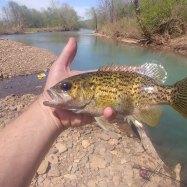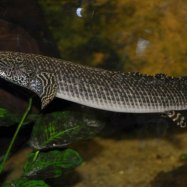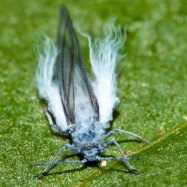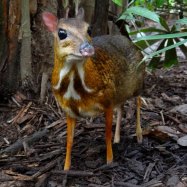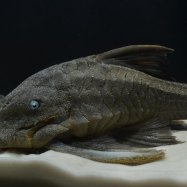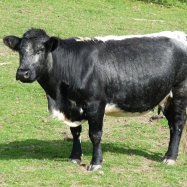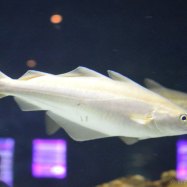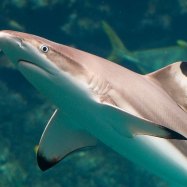
Chinook
2-3 feet
The Chinook, also known as the king salmon, is a popular and prized fish found in the Pacific Northwest. It can grow up to 2-3 feet in length and belongs to the Salmonidae family. With its streamlined and torpedo-shaped body, this fish is not only visually striking but is also a strong swimmer and a true treasure for fishermen. Keep an eye out for this majestic creature on your next fishing trip! #Chinook #Salmon #PacificNorthwest #KingSalmon #Fishing
Animal Details Summary:
Common Name: Chinook
Kingdom: Animalia
Habitat: Freshwater and marine
The Majestic Chinook Salmon: A Triumph of Adaptation in the Pacific Northwest
The Pacific Northwest is home to some of the world's most breathtaking natural wonders, and amongst its lush forests, rugged coastlines, and mighty mountains lies an extraordinary ecosystem that supports a remarkable animal species – the Chinook Salmon.Known as the king of salmon, the Chinook, also known as Oncorhynchus tshawytscha, is a majestic creature that has captured the hearts of many with its impressive size, extraordinary adaptations, and fascinating life cycle.
From its scientific name to its intricate anatomy, let us dive deeper into the world of the Chinook Salmon and discover the incredible features that make it a true triumph of adaptation in the Pacific Northwest.
The Kingdom of the Salmon
As with most living creatures, the Chinook Salmon belongs to the Kingdom Animalia, which encompasses all animals on the planet Chinook. It is one of the many species within the Phylum Chordata, a group that includes animals with a notochord, or a flexible rod that supports the body.Exploring the Class and Order of the Chinook Salmon
The Chinook Salmon is a species of the Class Actinopterygii, which includes all ray-finned fish with bones or rays supporting their fins. This class is one of the largest in the animal kingdom, with over 30,000 species.Within the Class Actinopterygii, the Chinook Salmon belongs to the Order Salmoniformes, which consists of over 1,000 species of fish, including trout and char. The notable characteristic shared by all members of this order is their adipose fin, a small backward-pointing fin found between their dorsal and caudal fins.
A Noble Member of the Salmonidae Family
The Salmonidae family is a diverse group of fish that includes salmon, trout, and whitefish. As the name suggests, this family is united by their common characteristic of having salmon-like features. For example, they all have an adipose fin, and their two dorsal fins are nearly fused together.Where the Chinook Salmon Calls Home
The Chinook Salmon is a salmonid species found in various habitats, including freshwater and marine environments Cactus Mouse. During their life cycle, they move between freshwater streams and the ocean. They are native to the North Pacific Ocean and the rivers along the west coast of North America, making them an iconic sight in the Pacific Northwest.The Chinook Salmon is anadromous, meaning they are born in freshwater, spend most of their lives in saltwater, and return to freshwater to spawn. This unique characteristic is part of their incredible adaptation to their environment, as it allows them to thrive in both freshwater and marine habitats and plays a crucial role in the ecosystem as a whole.
A Carnivorous Appetite
The Chinook Salmon is a carnivorous fish, meaning it primarily feeds on other animals. As they grow and migrate to the ocean, their diet mainly consists of small fish and invertebrates such as shrimp and squid. They have sharp, protruding teeth that allow them to efficiently catch and consume their prey.This feeding method is essential in sustaining their large size and energy requirements, making them a vital part of the food chain in the Pacific Northwest.
The Chinook Salmon's Geographical Distribution
The Chinook Salmon has a vast geographical distribution, with populations found all across the North Pacific Ocean and parts of North America. You can find them in countries such as the United States and Canada, making them a significant source of commercial and recreational fishing in these regions.The Incredible Adaptations of the Chinook Salmon
The Chinook Salmon is a highly evolved species that has adapted to thrive in its dynamic environment. From its body shape to its coloration, every aspect of this fish's anatomy is a testament to its resilience and survival.Slender and Streamlined Body Shape
The Chinook Salmon has a fusiform, or torpedo-shaped body, which enables it to swim efficiently through the water. Its tapered head, curved dorsal fin, and forked tail work together to reduce water resistance and help the fish glide through the currents with ease. This streamlined body shape is crucial during their migration to and from the ocean, where they may travel hundreds of miles to reach their spawning grounds.Intricate Coloration for Camouflage and Courtship
The Chinook Salmon has a remarkable ability to change its skin color to adapt to its surroundings, making it challenging for predators to spot them. They can range from silver, green, blue, black, to shades of brown, blending in effortlessly with their environment and ensuring their survival.Additionally, during the spawning season, male Chinook Salmon develop a distinctive darkened coloration on their body and head, while females take on a more metallic silver color. This distinct coloration plays a crucial role in courtship and signaling breeding readiness to potential mates.
A Wondrous Length of 2-3 Feet
The Chinook Salmon is a large species of fish, with adults typically measuring between 2-3 feet in length. However, they can reach impressive sizes, with the largest recorded Chinook Salmon measuring over 5 feet in length and weighing over 120 pounds.This size is a result of their migration to the ocean, where their diet is rich in nutrients, enabling them to grow and thrive.
Conservation of the Chinook Salmon
The Chinook Salmon has faced numerous threats to its survival, ranging from overfishing to habitat destruction. However, conservation efforts have been put in place to protect and restore their populations.These efforts include the restriction of commercial fishing and the creation of hatcheries to help boost the population of Chinook Salmon. In addition, various organizations and government bodies work towards preserving the natural habitats of this remarkable species, ensuring their continued existence in the Pacific Northwest.
In Conclusion, the Chinook Salmon is a triumph of adaptation, perfectly suited to thrive in the dynamic and diverse ecosystem of the Pacific Northwest. From its complex taxonomy to its impressive anatomy, this powerful and iconic fish is a symbol of the beauty and resilience of nature.
Next time you visit the Pacific Northwest, take a moment to appreciate the incredible Chinook Salmon and its role in maintaining the balance of this wild and wonderful corner of the world.

Chinook
Animal Details Chinook - Scientific Name: Oncorhynchus tshawytscha
- Category: Animals C
- Scientific Name: Oncorhynchus tshawytscha
- Common Name: Chinook
- Kingdom: Animalia
- Phylum: Chordata
- Class: Actinopterygii
- Order: Salmoniformes
- Family: Salmonidae
- Habitat: Freshwater and marine
- Feeding Method: Carnivore
- Geographical Distribution: North Pacific Ocean and rivers along the west coast of North America
- Country of Origin: United States and Canada
- Location: Pacific Northwest
- Animal Coloration: Silver, green, blue, black, and brown
- Body Shape: Streamlined and torpedo-shaped
- Length: 2-3 feet

Chinook
- Adult Size: Up to 5 feet
- Average Lifespan: 3-8 years
- Reproduction: Anadromous
- Reproductive Behavior: Spawning
- Sound or Call: No
- Migration Pattern: Yes
- Social Groups: Solitary
- Behavior: Aggressive when spawning
- Threats: Overfishing, habitat destruction, pollution, climate change
- Conservation Status: Threatened
- Impact on Ecosystem: Important for nutrient cycling and as a prey species
- Human Use: Commercial and sport fishing
- Distinctive Features: Large size, hooked jaw, and dark spotting
- Interesting Facts: Also known as king salmon, they are the largest species of Pacific salmon
- Predator: Marine mammals, birds, and larger fish

Oncorhynchus tshawytscha
The Mighty Chinook Salmon: A Unique Species and Vital Resource
The Chinook salmon, also known as the king salmon, is a magnificent and distinctive species that holds great ecological, economic, and cultural importance. Native to the North Pacific Ocean and its tributary waters, this iconic fish has captured the hearts and minds of biologists, fishermen, and conservationists alike. With its impressive size, unique physical characteristics, and fascinating behaviors, the Chinook salmon has become a source of wonder and admiration for many. In this article, we will delve into the world of the Chinook salmon, exploring its biology, behavior, conservation status, and the crucial role it plays in our ecosystems PeaceOfAnimals.Com.The Chinook salmon, scientifically known as Oncorhynchus tshawytscha, is the largest species of Pacific salmon. They can reach lengths of up to 5 feet and weigh over 100 pounds, making them truly impressive creatures. Their coloring varies depending on their life stage and location, but they generally have a dark blue-green back, silver sides, and a white belly. Most noticeably, Chinook salmon have distinctive dark spotting along their back and tail, earning them the nickname "spotted salmon."
Adult Chinook salmon can be found in the North Pacific Ocean, from California to Alaska, and can travel thousands of miles during their annual migration. They are also found in freshwater rivers and streams where they return to spawn. These fish are considered anadromous, meaning they live in both freshwater and saltwater environments. This unique adaptation allows them to access abundant food sources in the open ocean while still returning to their natal streams to reproduce.
Speaking of reproduction, Chinook salmon exhibit an interesting reproductive behavior known as "spawning Cashmere Goat." They return to their natal streams, where they were born, to lay their eggs and complete their life cycle. This behavior is crucial for the species' survival, as it ensures that the next generation of Chinook salmon will continue their legacy. However, this spawning behavior can also make the Chinook salmon vulnerable, as they are more likely to encounter threats such as overfishing and habitat destruction during this time.
Despite their large size and powerful appearance, Chinook salmon do not have a sound or call. However, they do communicate through their sense of smell, using pheromones to locate and attract potential mates. This sense of smell also aids in navigation during their migration, as they can "smell" their way back to their natal streams.
Chinook salmon have a unique migration pattern, starting in freshwater and ending in the ocean. Unlike other anadromous fish, they do not make one round-trip migration between freshwater and saltwater. Instead, they make two separate journeys: one from freshwater to the ocean as smolt (young salmon) and one from the ocean back to freshwater as adults. This complex migration pattern is essential for their survival and is what makes them such an impressive and resilient species.
While in the ocean, Chinook salmon are solitary creatures, preferring to swim alone rather than in schools like other salmon species. However, this changes during spawning season when they exhibit aggressive behavior towards other fish, particularly other male Chinook salmon. Their aggression is necessary to secure a mate and ensure their genes are passed on to the next generation. This behavior, combined with their large size, makes Chinook salmon a formidable force in the water.
Sadly, despite their strength and resilience, Chinook salmon face numerous threats that have significantly reduced their population. Overfishing, habitat destruction, pollution, and climate change have all contributed to the decline of this iconic species. Overfishing, in particular, has had a severe impact on Chinook salmon populations, as they are a highly sought-after fish for both commercial and sport fishing. Their population declines have led to their classification as a threatened species, with conservation efforts being put in place to protect and restore their numbers.
The decline of Chinook salmon has also had a significant impact on the ecosystems they inhabit. These fish play a vital role in nutrient cycling as they bring in marine-derived nutrients from the ocean to freshwater environments during their migration. This process helps to nourish the surrounding plants and organisms, creating a healthier ecosystem. Chinook salmon also serve as a prey species for various marine mammals, birds, and larger fish, contributing to the diversity and balance of the ecosystem.
Humans have a long history of utilizing Chinook salmon as a valuable resource. Native cultures have relied on this fish for sustenance and cultural practices for centuries. Today, Chinook salmon is still commercially fished, and they are a prized catch for sport fishermen. However, responsible and sustainable fishing practices are crucial to ensure the survival of this species and its contribution to our ecosystems.
In conclusion, the Chinook salmon is a unique and vital species that deserves our attention and protection. From its impressive size and distinctive physical features to its complex life cycle and importance in our ecosystems, there is no denying the impact this fish has on our world. As humans, it is our responsibility to ensure the survival of this species for the generations to come. Through responsible fishing practices, conservation efforts, and supporting a healthy ecosystem, we can help to preserve the mighty Chinook salmon and all the wonders it brings to our world.

The Majestic Chinook Salmon: A Triumph of Adaptation in the Pacific Northwest
Disclaimer: The content provided is for informational purposes only. We cannot guarantee the accuracy of the information on this page 100%. All information provided here may change without prior notice.

